The Flemish victory over the French at the Battle of the Golden Spurs in 1302 led to a vast change in social structures, but that battle did not finish or solve the issues between Flanders, France and England. By the 1320s Flanders had still been in near-constant warfare for decades and was, frankly, in a state of chaos. The Count of Flanders had lost much control, guilds had gained enough power in towns so as to be able to compete with the urban elite and each other, and people in the countryside were often having to feed everybody while not enjoying the benefits of being a rich cloth merchant. Chaos, as we know, is a ladder, and a man named Jacob van Artevelde was going to climb it to the top.
The French kings did not suddenly have a change of heart towards Flanders following the impressive victory near Kortrijk. After the Treaty of Athis-Sur-Orge, France regained allegiance from the Flemish Count, Robert of Bethune, as well as significant portions of his territory, including two of the biggest cities, Lille and Douai. Flanders had a massive tax hefted upon it, known as the Transport of Flanders. The burden of collecting the tax was thrust upon the Count of Flanders, and if he was to properly collect it, the bulk of the money would come from the remaining big cities of Ypres, Bruges and Ghent. This was not a happy prospect.
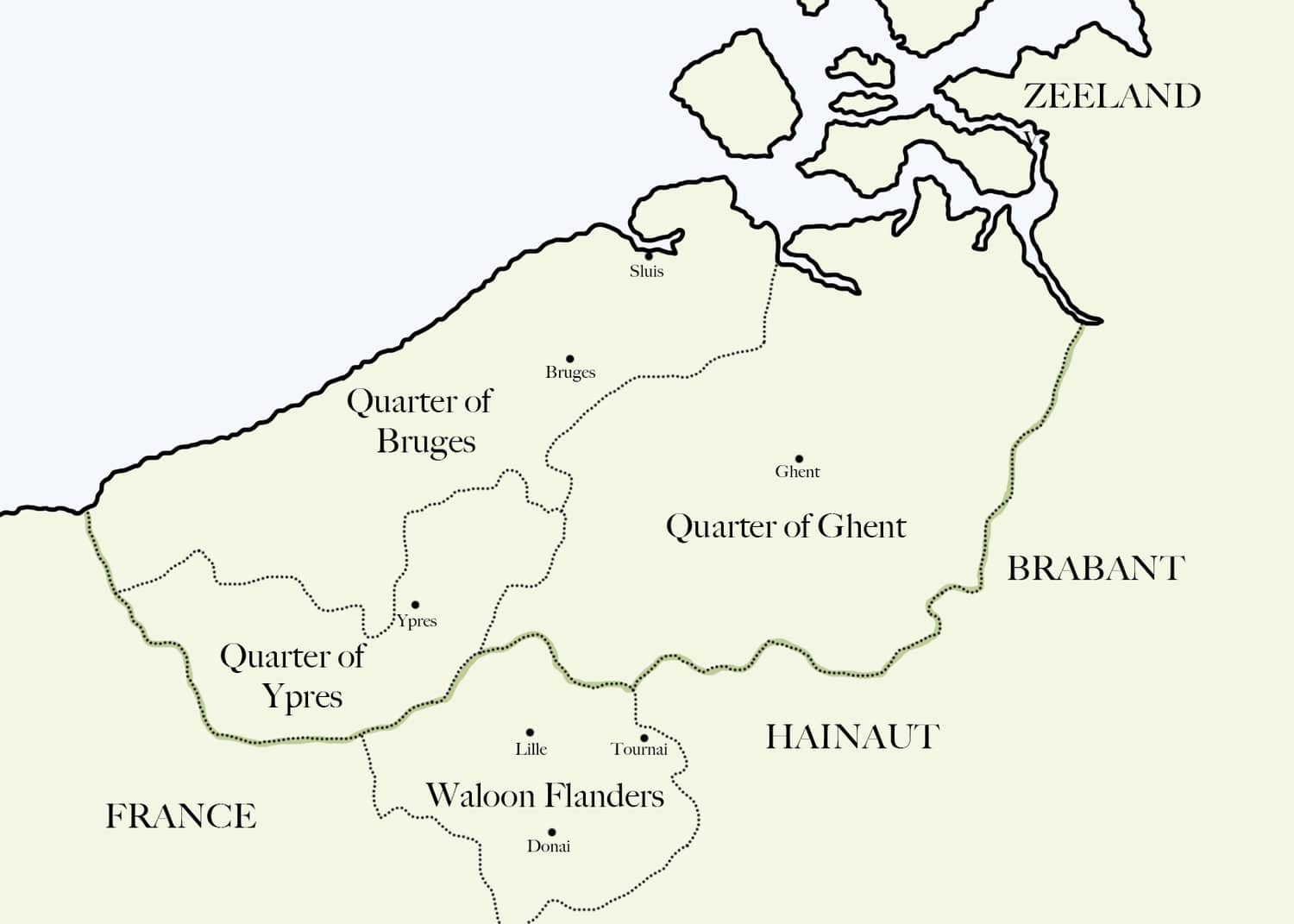 Map of Flanders showing regional divisions in around 1320
Map of Flanders showing regional divisions in around 1320© David Cenzer
In 1322 Robert of Bethune died, and upon doing so, his grandson, Louis of Nevers, became the new Count of Flanders. Louis had been brought up at the French court, speaking French. Thrust into the most volatile of princely positions in the lowlands, he did not engender the same sense of Flemish parochialism that Robert of Bethune and his father, Guy of Dampierre, had done in previous decades. Louis just could not manage to balance his vassalage to the French king with the demands of the different power groups throughout Flanders.
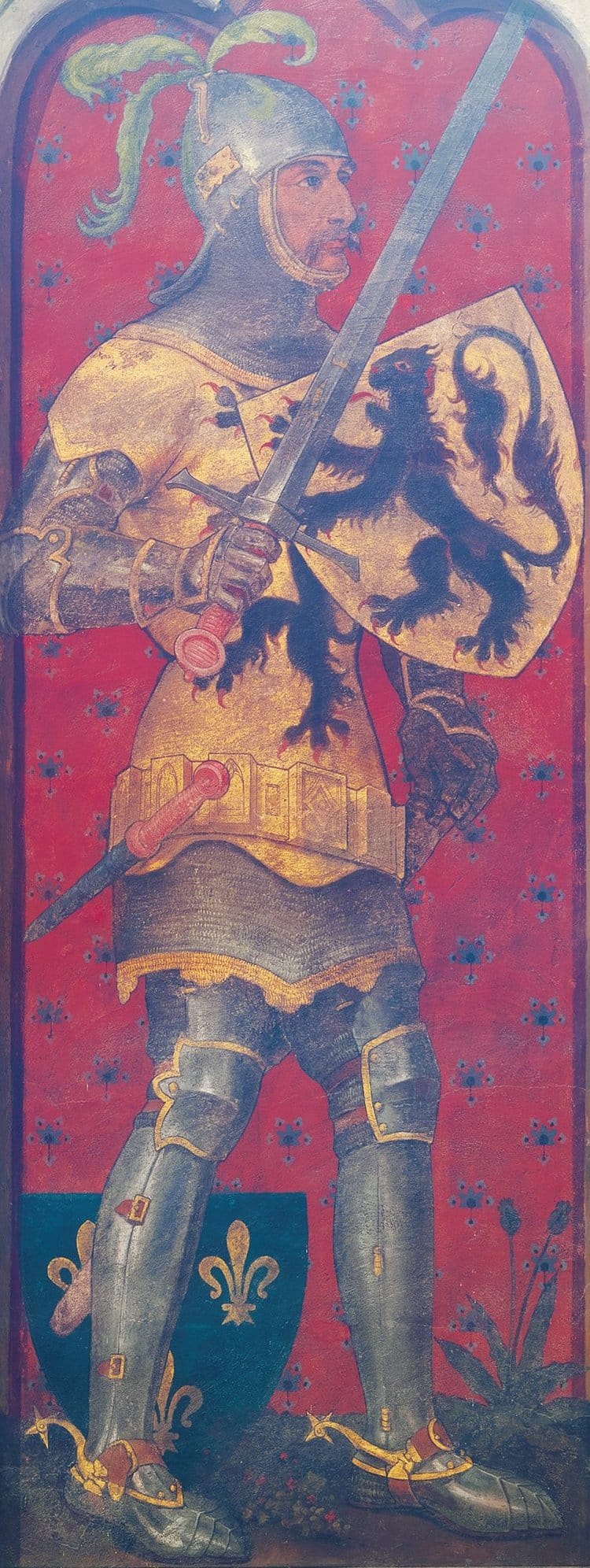 Louis of Nevers, Count of Flanders, painted by Edmond de Busscher, 1858
Louis of Nevers, Count of Flanders, painted by Edmond de Busscher, 1858© Wikimedia
Power structures in Flanders had changed dramatically in the aftermath of the Battle of the Golden Spurs. Workers guilds within the strong cloth towns of Flanders had given themselves a foothold on the rungs of power. The most powerful towns of Flanders would continue to grow, and their need for resources would begin to encroach upon the populations in regional areas. In turn, people in regional areas began to unify and mobilise to protect their own interests. Meanwhile, the established urban patriciate, landowners and other rich men in towns, continued to seek ways of dealing with this dilution of power, all the while trying to manage their own interests with the larger struggles for power between the Counts of Flanders and the Kings of England and France.
Flemish Peasants Revolt of 1323-1328
By 1323 Flanders had been taken over by the people ruling the “three cities”; Ypres, Bruges and Ghent. Varyingly, they began to dominate the areas outside of their walls, and created legislation to protect their textile industries at the expense of the surrounding countryside. As stated by Blom and Lamberts in History of the Low Countries:
‘If their laws were not obeyed, they sent militias to destroy the looms and fuller tubs of their opponents.’
Imagine being a farmer outside of Bruges, busy fulling your own cloth as a cheaper alternative to paying guild prices, and seeing a bunch of angry citizens come storming out of the town and towards you. Having heard of this illegal fulling, armed with pikes and goedendags, they would come barging in, kicking over and smashing your tubs of urine. But the towns were becoming fat off the profits of the wool industry and wanted to protect themselves. Around 1325, the annual ordinary revenue of Ghent surpassed that of the Count of Flanders. They could do whatever they wanted, really. For instance, when the taxman came around, they could basically shut up their gates and tell them to go away. People in the countryside didn’t have this option. So, when the new Count, Louis of Nevers, planned to enforce the Transport of Flanders tax, discontent stirred.
Louis was not contemptibly pro-French from the beginning. He actually gave up his Dampierre line’s claim against those infernal Avesnes for the County of Zeeland, ending a family feud over the territory that had been raging since the 1240s. He also began to issue greater liberties to Ypres and Bruges, allowing them monopolies on the cloth trade in their local areas. Louis learned early on, however, the first lesson taught to every Flemish count. You are a vassal of the French king. Ordered to Paris to explain these treaties he had made, he was imprisoned briefly at the end of 1322 until he issued the gravest apology, heartfelt adulations and eternal homage to his liege lord. From then on the reputation of Louis in Flanders would be that he was a French pawn.
Having experienced first-hand this bit of feudal relationship abuse, Louis came back to Flanders and, in an attempt to lick his wounds and make himself feel good again, he decided to give out the feudal rights to the town of Sluys (in Dutch: Sluis) to his uncle, John of Namur, in July 1323. Sluys was where ships and their goods entered and exited Bruges. The people of Bruges were enraged at this encroachment on their autonomy, and so in retaliation, on 1 August, they entered Sluys, burnt it to the ground, and took John of Namur hostage. They may as well have slapped Louis in the face with a croissant. In fact, that might have been slightly less humiliating, as at least he would have gotten a free breakfast out of it. Still, there was simply nothing Louis could do but sit and take it.
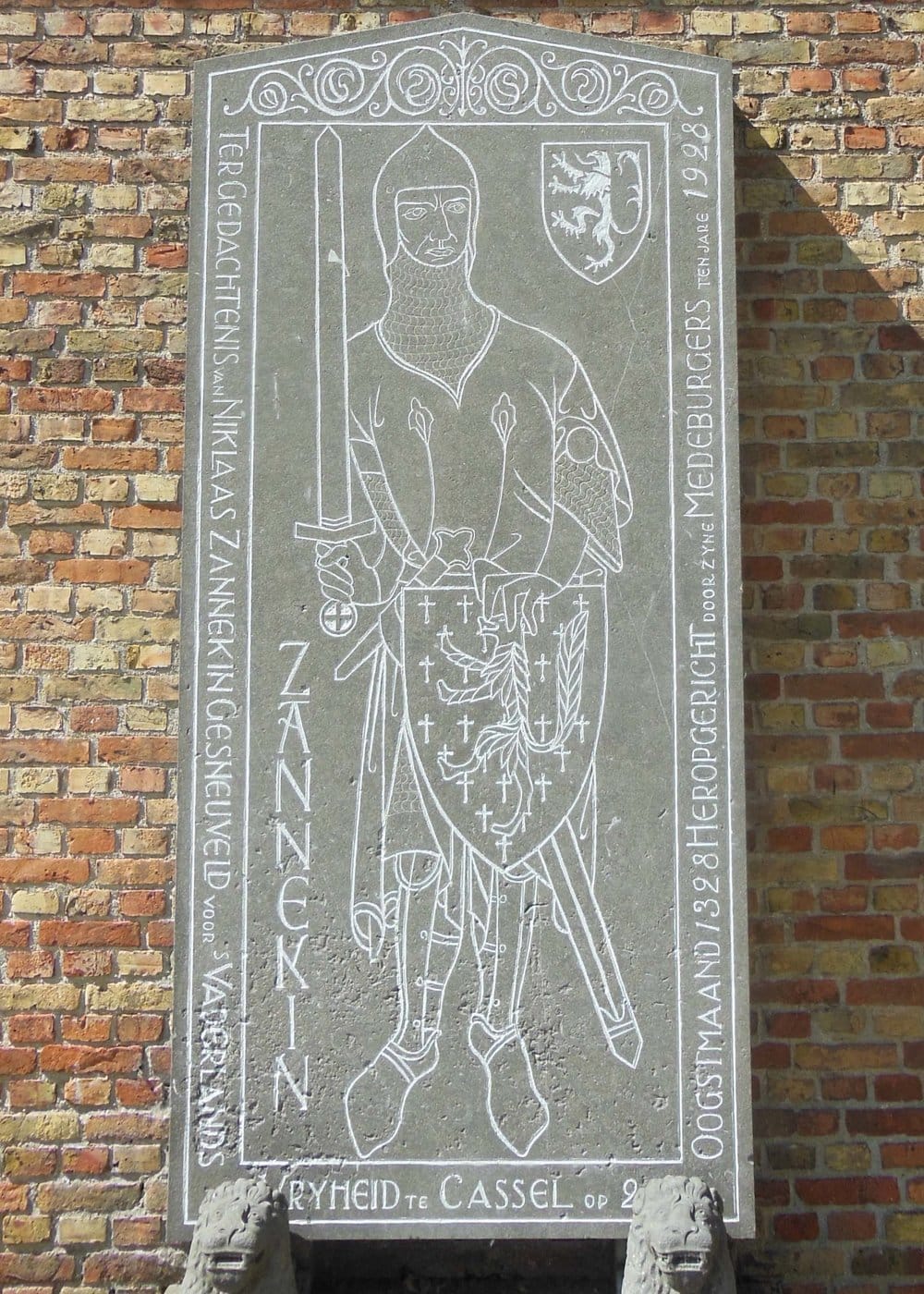 A remembrance stone on a church wall dedicated to Zannekin
A remembrance stone on a church wall dedicated to Zannekin© Wikimedia
Louis went about trying to enforce the collection of the Transport of Flanders, the taxes stipulated by the Treaty of Pontoise. He was now very broadly offside not only with the people living in the cities, but also in those in the countryside. Around October 1323, a peasant farmer’s uprising erupted in Flanders in protest of the planned taxes. The Count was in France at the time. He had to rush back to Flanders when the farmers, led by a rich, peasant farmer called Nicolaas Zannekin, organised and went rampaging through the county. They took Nieuwpoort, Veurne and Ypres. For the next 5 years, led by Zannekin, they dominated Flemish internal affairs, often enforcing their rule by violence in towns and cities. The pope was called upon by the French King, Charles IV, and duly excommunicated all of the rebels, which was a terrifying thing for any Christian who lived in Western Europe at this time. The fact that the rebels went against the ecclesiastical judgements, however, shows how determined they were. The tensions flared on and off as the two sides negotiated with each other, but in one of the outbursts of violence, Count Louis himself was captured by the Bruges militia at Kortrijk, and held hostage in Bruges for about half a year before he was eventually released at the beginning of December 1325.
Whereas Bruges and its surrounding countryside was the epicentre of this uprising, Ghent was the centre of the reaction against it. Many of the burghers and nobles who fled from the wrath of the rebels ended up in Ghent, and the patricians there managed to keep the town out of the fray until 1325, when the weavers in that town also rose up. This flare-up was quelled, however, and 600 of the instigators were fined heavily and then exiled from Ghent for life. The duty of collecting these payments was given to a rich broker called Jacob van Artevelde.
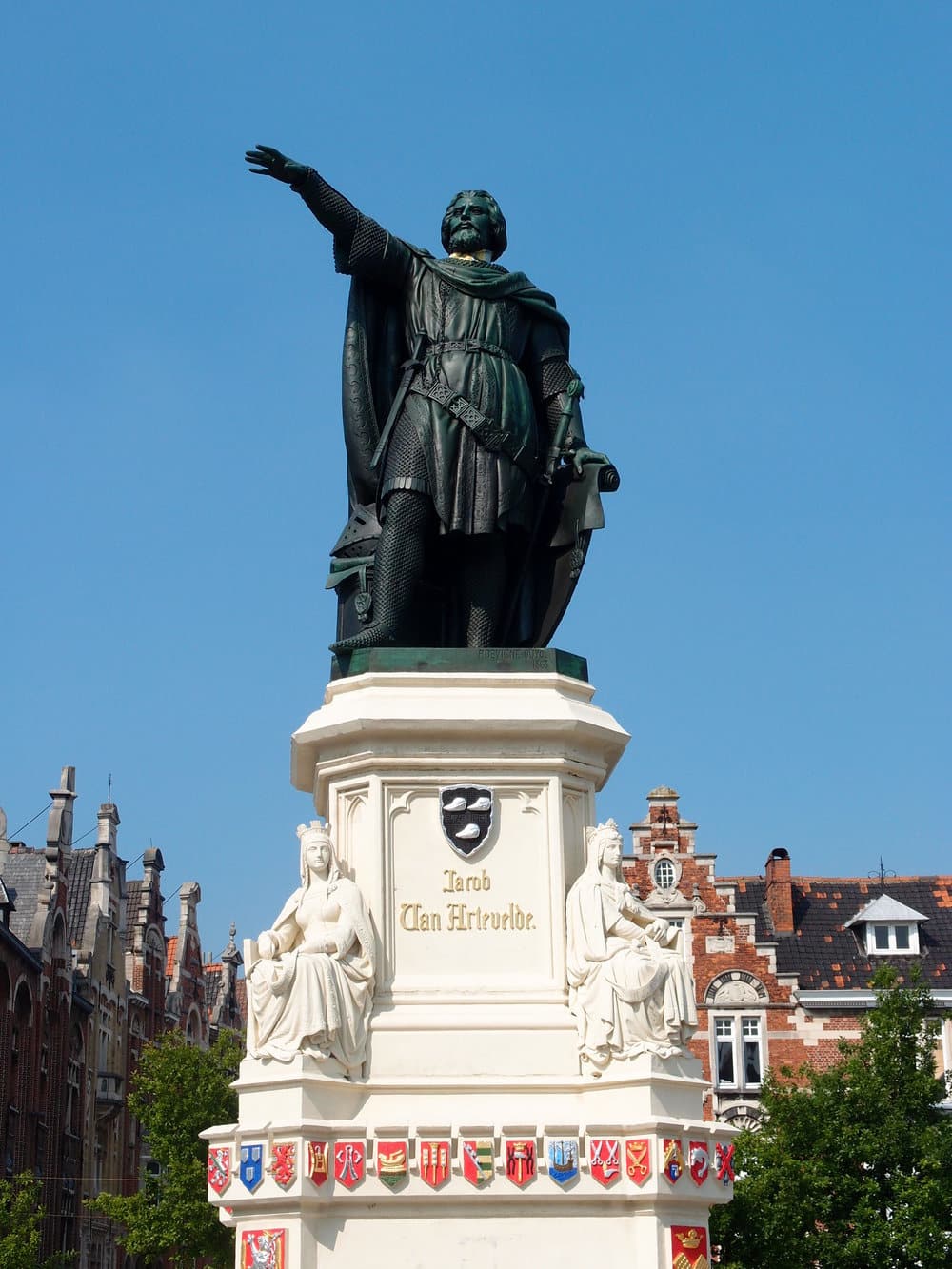 Statue of Jacob van Artevelde in Ghent by Pieter de Vigne, 1863
Statue of Jacob van Artevelde in Ghent by Pieter de Vigne, 1863© Wikimedia
After another lull in hostilities, the rebellion flared again in 1328. A new king was by then on the throne of France, Philip VI. French military intervention saw the rebellion crushed and Louis reinstated as count. Property was confiscated, especially from the poorters of Bruges who had also defied the count. Bruges and Ypres both had their walls knocked down and their moats filled in, and along with many other towns had their privileges taken away from them. Ghent, having denied the rebels, came out of it in a stronger position than the other cities.
But although the peasant’s rebellion was defeated, its causes did not disappear. The power structures in Flemish cities and the countryside continued, like the rulers and interested parties throughout strived to protect their particular agendas. One consequence was that the richer farmers in regional areas managed to form a conservative body politic that could serve to counter the incursions into regional areas by powers based in the cities. By the end of the 14th century the so-called “Franc of Bruges”, the agricultural area outside that town, would join the three big cities and become part of the so-called ‘four members’ of Flanders.
Flanders at the beginning of the Hundred Years War
We don’t want to get too wrapped up in the complicated events going on between France and England at this point in time, but suffice it to say that Flanders, stuck right between the great powers, would be used by both sides in their attempts to hurt each other and to find allies for the upcoming war. Many within Flanders preferred continuing good relations with England and uninhibited access to its wool and markets. When the English embargoed the export of wool and food to Flanders in 1336, the Flemish cities were rocked. Faced with high unemployment and food shortages, the towns were full of hungry, angry, desperate people, who were looking for somebody, anybody to lead them out of this mess.
At a meeting on 28 December 1337, a general assembly of the citizens of Ghent was held at an abbey in one of the suburbs of the town. What exactly was said is lost to history, but we can imagine a mob of cold and pissed off people, furious that their count’s love-in with the French has led to them losing their jobs, listening as various stand up in front of them and lay out their vision of what should happen instead. One person who spoke at this meeting was Jacob van Artevelde, and about a week later he and four other men were elected as “captains” of Ghent. This was not an official position, but more a group of revolutionary leaders who stood totally apart from the official councils of aldermen and were given reign of the city. Within a short space of time, Jacob van Artevelde was the “chief captain” of Ghent, and soon, he would be in total control of all of Flanders.
The Meteoric Rise of Jacob van Artevelde
Not a lot is known about the early years of Jacob van Artevelde. His life has been wrapped up in myth and legend by nationalistic and romantic historians writing about him in later centuries, trying to use him as a prototype of a Flemish, nationalist, man of the people. He was born in Ghent and made his fortune as a broker. The nicknames that would survive him include ‘the Wise Man’ and ‘the Brewer of Ghent’, though it is totally uncertain whether he ever brewed anything other than turning the ingredients of war, social unrest and radical revolution into a whole new political state. One common story is that he enrolled himself in the brewer’s guild of Ghent to make himself more popular amongst the regular people.
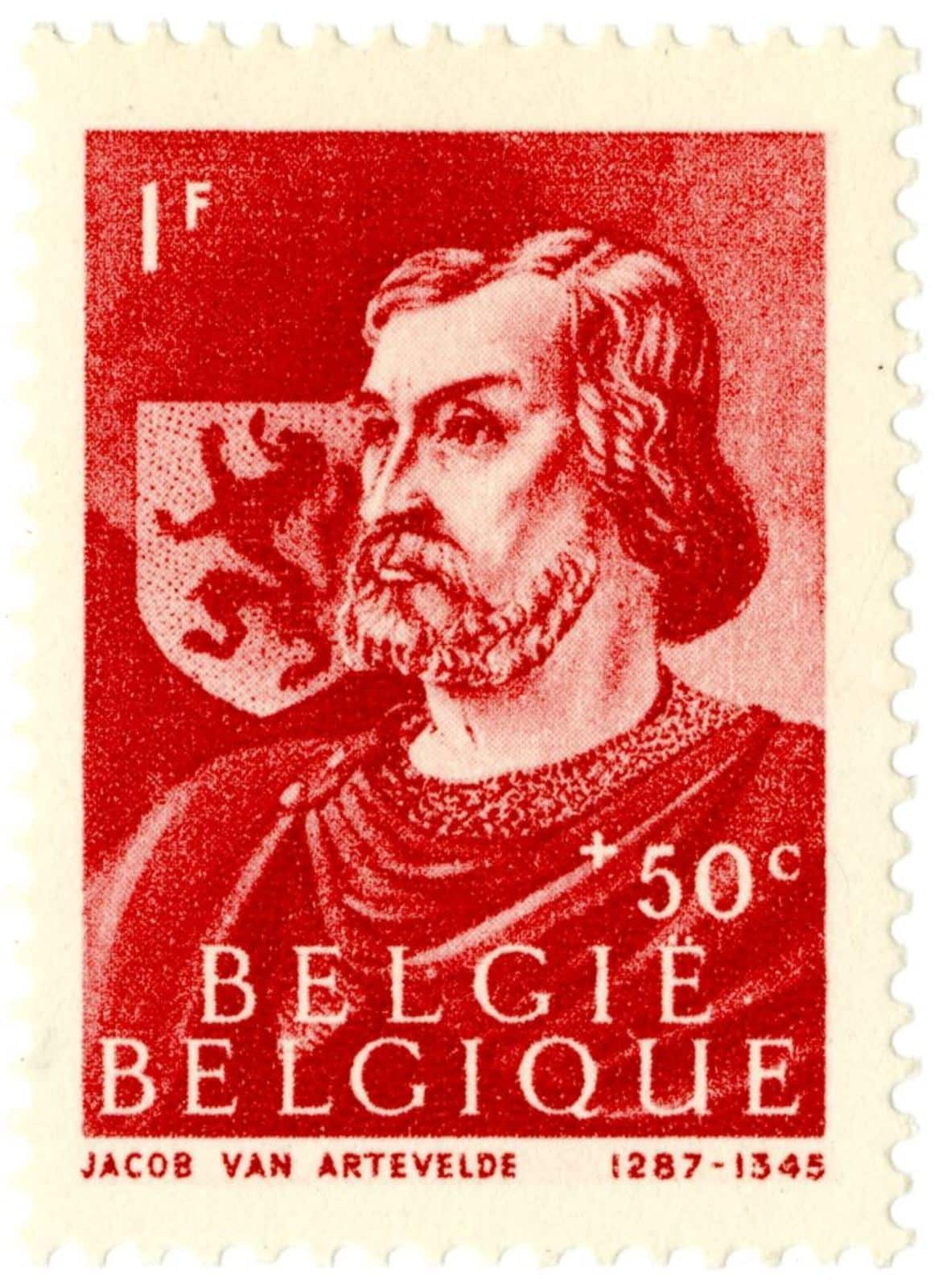
Whatever the case, upon his appointment he and the rest of the captains went about trying to repair the damage that both the region and its economy had incurred. They did this with a heavier hand the further they reached away from the three big towns. There was unrest and food shortages in these towns, and general malaise from all the war and uncertainty. Van Artevelde’s interest was in the wealth of the urbanised wool industry, and he sought to kick the towns back into gear.
Within two days the price of grain in Ghent had been fixed and hoarding was forbidden. Van Artevelde ran a broom through various levels of city administration in Ghent, firing, exiling or promoting people in different positions as he saw fit. In May of 1338, accompanied by men of the towns, captains of the militia and guild representatives, he marched upon various manorial lords and forced them to swear obedience to him. He then appointed various captains to rule other towns and regional areas with an iron fist.
This was not the first time that military rule had developed under the leadership of town captains. However, what was remarkable about this group of captains was that at least three, and probably four, are believed to have been craft guild members, mostly weavers and probably one fuller. These men were the inner circle that formed around Van Artevelde.
On an international front, Van Artevelde tried to keep Flanders from submitting to the pressure being placed on it by both England and France, and instead sought out a federation of alliances between towns in Flanders, Hainault, Brabant and Holland, with the aim of neutrality in the coming conflict between England and France. His measures were designed to allow the wool industry to flourish once more, and in this, he was largely successful. One of these measures was to attain a strong commercial treaty with England. This obviously went against the pacts of neutrality that he had manufactured, but in reality, he was a man who had made his wealth through wool, so he was very much pro-English.
He essentially created a dictatorial state. Gaining prominence through wealth, and clearly having a sharp administrative mind, he also used absolute fear to control the people of Flanders. The medieval author and court historian, Jean Froissart, who was writing around the mid-to-late 1300s would have spoken to people who bore witness to the reign of Van Artevelde described his manner of ruling thus:
‘…there was none…that durst disobey his commandment. He had always going with him up and down in Ghent sixty or fourscore varlets armed, and among them there were three or four that knew the secretness of his mind, so that if he met a person that he hated or had him in suspicion, incontinent he was slain: for he had commanded his secret varlets, that whatsoever he met any person and made such a sign to them, that incontinent they should slay him, whatsoever he were, without any words or reasoning; and by that means he made many to be slain, whereby he was so doubted, that none durst speak against anything that he would have done, so that every man was glad to make him good cheer.’
Here was a proto-modern totalitarian state of which Van Artevelde manoeuvred its policies according to his and its interests, which he saw as the same. He paid his bodyguards and supporters handsomely and on time, and by doing so was able to gain such a strong position throughout all of Flanders. He also went about ejecting anybody who he thought was loyal to Count Louis, and confiscated their land, keeping half of it for his own use whilst leaving the other half to their wives and children. He collected the revenues which were owed to the Count and used them to his own ends, not keeping accurate accounts of where the money was coming from or to where it was going. If he wanted money, he just demanded it. And would you say no to a guy with an army of people willing to kill you at a secret hand signal? In February 1339, Louis was forced to flee Flanders, and in his stead, his brother-in-law, a man named Simon de Mirabello, a Lombard banker and friend of Jacob van Artevelde became regent. Artevelde was now, in practice, the sole authority in Flanders. This is the last time we will see Count Louis, who would end up dying, fighting for the French king against the English at the Battle of Crecy in 1346.
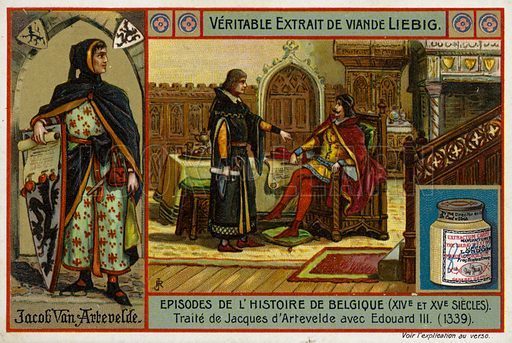 Agreement of a treaty between Jacob van Artevelde of Ghent, and King Edward III of England, 1339. Liebig card, from a series on episodes from the history of Belgium in the 14th and 15th centuries, published in late 19th or early 20th century
Agreement of a treaty between Jacob van Artevelde of Ghent, and King Edward III of England, 1339. Liebig card, from a series on episodes from the history of Belgium in the 14th and 15th centuries, published in late 19th or early 20th centuryAs we mentioned earlier, Van Artevelde’s main priority was re-starting the trade to England. He fostered great relations with the English King, Edward III, who sailed with his navy to dock at Sluys, near Bruges. From there he could conduct his war against the French. Froissart tells us how there were many meetings between Artevelde and the King, and the various representatives of the cities. Through giving him loans, Artevelde was able to negotiate an end to the embargo on the export of wool from England to Flanders, as well as Edward’s vow to take back the towns Flanders had lost to France over the last century. Edward’s main priority was to find allies to fight the French. Van Artevelde knew that, despite having a revolutionary regime in charge, the Flemish still valued the oaths they had sworn to the French crown, and would suffer retributions from the Church as well as shame and dishonour if they were to turn against their suzerain. But if Edward was to be crowned as King of France, this would release the cities from any obligation they had to Philip. So, on the 26th of January, 1340, Edward III entered Ghent and, in great pomp and circumstance on the Friday Market square, representatives of the three cities of Flanders recognised Edward as their lord and as the true King of France.
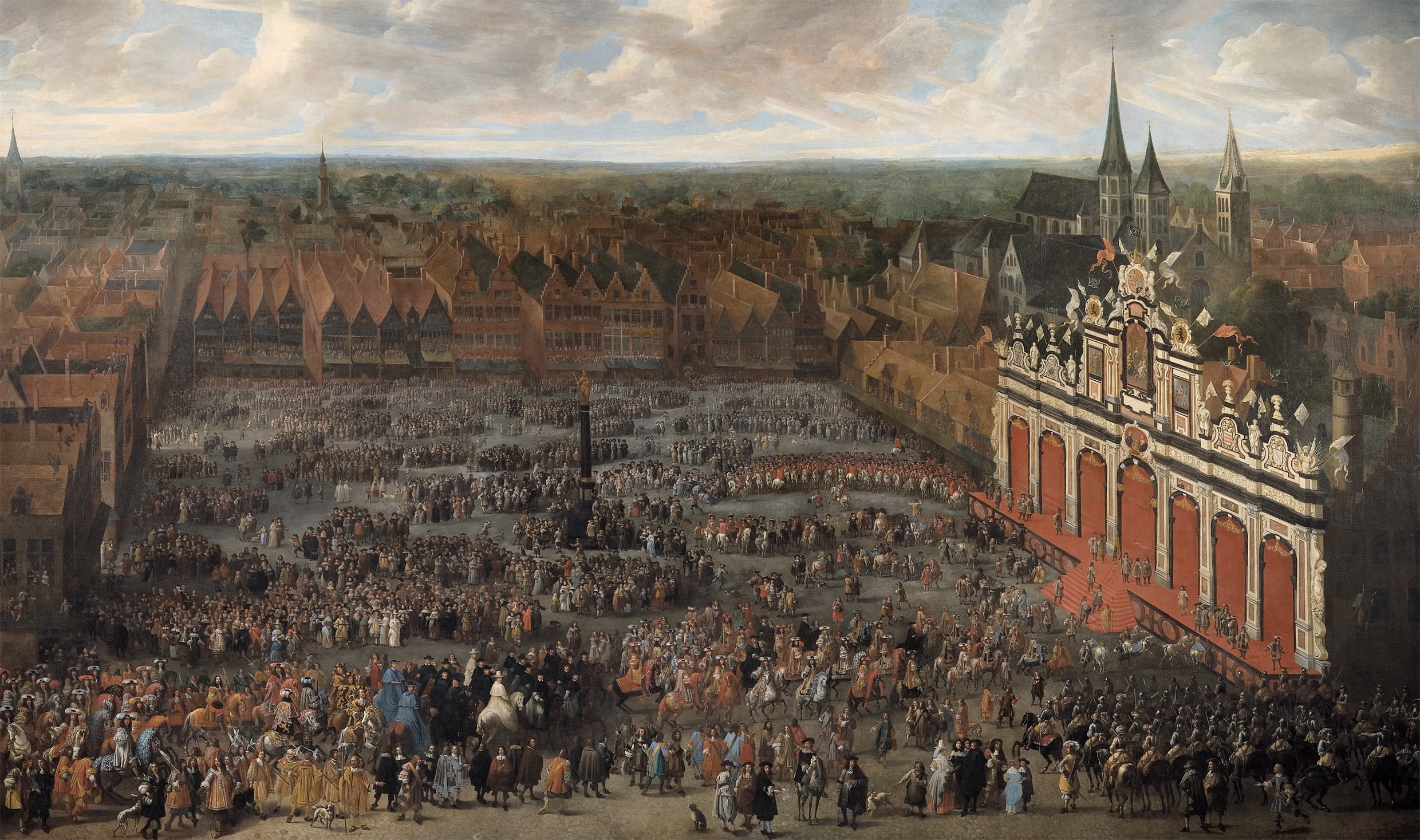 The Friday Market Square in Ghent, painted by François Duchatel, between 1666 and 1668
The Friday Market Square in Ghent, painted by François Duchatel, between 1666 and 1668© Wikimedia
Let’s consider how weird this is. Within the space of almost exactly two years, Jacob van Artevelde had gone from being a commoner, albeit a rich one, probably known only within Ghent, to negotiating on equal terms, with the King of England, to having him recognised as the King of France. This is a ridiculous rise to power in an extremely short amount of time, and shows that noble bloodlines weren’t actually necessary to rise to power as long as you had the charisma, money, and ruthlessness to get yourself there. Machiavelli would have been proud, were he not still more than a century from being born.
Having formalised this alliance with the English, the next thing to do was to go fight the French. In June 1340 the English and French fleets met each other near the town of Sluys. The fighting was intense, involving ships lashing to each other and the sailors engaging in hand to hand combat, and could have gone either way. Eventually, some Flemish ships left their nearby ports and attacked the French from behind, leading to a clear victory for the English. It is estimated that up to twenty thousand French soldiers died during the battle, and it resulted in the English gaining control of the Channel.
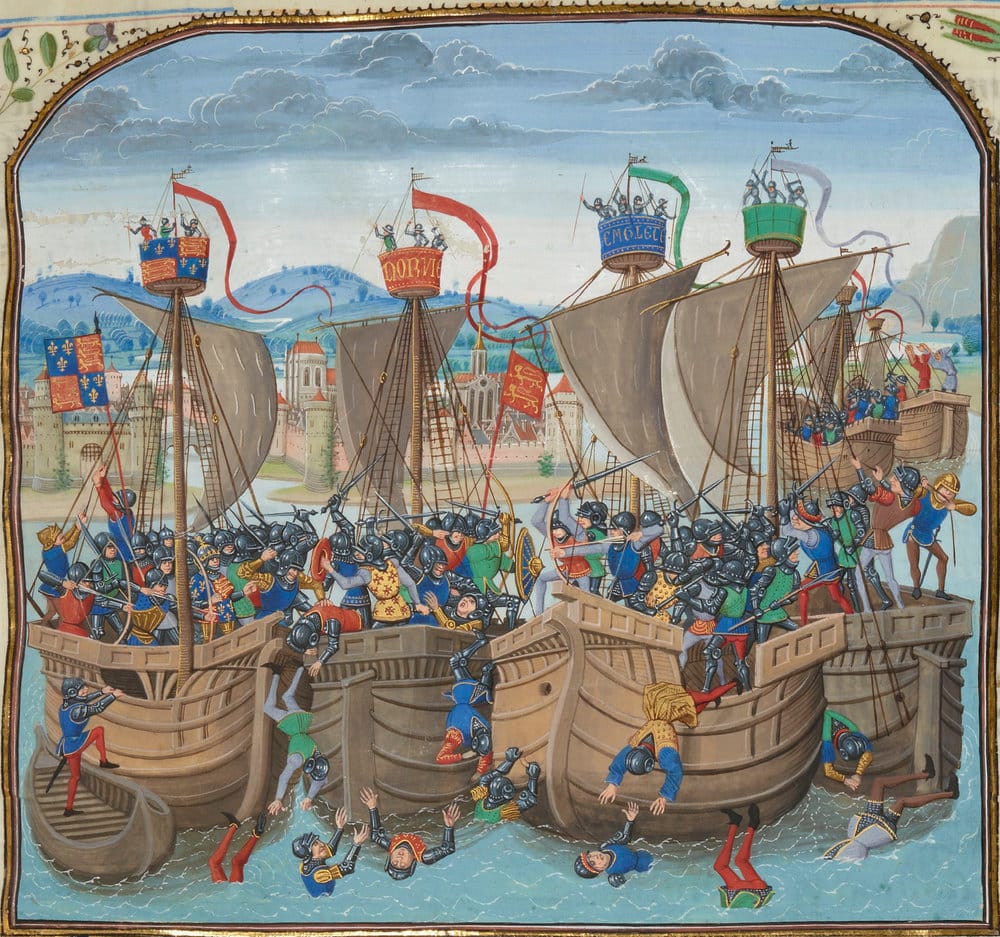 Depiction of the Naval Battle at Sluys between France and England, 24 June 1340, miniature from Jean Froissart's Chronicles
Depiction of the Naval Battle at Sluys between France and England, 24 June 1340, miniature from Jean Froissart's Chronicles© Wikipedia
After the Battle of Sluys, the English then put the town of Tournai, near Lille, under siege. This was less successful, however, and ended in a stalemate after the political situation in England demanded that Edward return. The Truce of Espléchin was signed, which forbade England from attacking France for the next five years, and allowed King Eddy and the English army to Brexit off the continent. This left the Flemish, unusually for lowlander people, caught a bit high and dry. They had revolted against the French, under the seeming protection of the English, but were now left alone to face the consequences of it. The Flemish people, no matter whether they had supported this alliance or not, would surely pay for it.
…And The Dramatic Fall of Jacob van Artevelde
And so the meteoric rise of Van Artevelde began its inevitable, blazing crash back to earth. Between 1340-42 Flanders avoided military engagement with any foreign power. But already questions had begun to be asked about the direction that Van Artevelde had taken the county in, as well as about all the money he had been collecting over the years of his rule. There also remained much discontent at the lack of loyalty shown to the Count of Flanders. In 1343 a rebellion led by the dean of weavers in Ghent almost managed to topple the Van Artevelde regime, but at the last minute, he was rescued by an army of his supporters from Bruges.
The totalitarian control of Flanders that Van Artevelde had manufactured sustained him until 1345, but eventually, the time arrived for him to take that sudden and swift, solo slide off the platform of power. He had many problems. Domestically, he could not satisfy the various agendas of all those different groups, particularly the weavers and the fullers. After the uprising by the weavers against him, he had sided with the fullers. Weirdly, however, he chose to side with the weavers when the fullers were demanding more money from them. He basically made everybody unhappy, and his support crumbled. On the 2nd of May, 1345, the guild militias of the weavers and the fullers fought each other in a full-on (pardon the pun) battle that wove its way into history (ugh, sorry couldn’t help myself) on the Friday Market Square in Ghent, the same place where the English king had been proclaimed the French king five years earlier. The weavers won the battle, and van Artevelde’s main detractors were now in power in the city. Soon, not even his brutal retinue of paid killers would be able to protect him within the city walls.
In July 1345, however, his old mate King Edward of England returned to Sluys. Even though he had little to no power left in Ghent, where he was officially appointed, Van Artevelde still went to go and negotiate with the king again, probably sent because of his close personal relationship with him.
The discussions this time raised the issue of making Edward’s son and heir the new Count of Flanders. This was another Edward who would, through much-later literature, become known to history as The Black Prince. The prospect of completely changing count was a tough thing for Van Artevelde to sell to the Flemish. Being a city-dwelling businessman, he had always had more luck bringing the urban ruling parties over to his side. The countryside factions, the newer body of influence besides the towns, were even more conservative and largely still loyal to the rule of the absent Count Louis. They in particular, but also people in all parties, were extremely upset about this apparent plan to bequeath the Count’s title to The Black Prince. Remembering that Van Artevelde ruled by abject fear, in the meetings held between the King, Van Artevelde and representatives of the four members, those representatives were not brave enough to disagree with his plans to his face. Instead, they insisted that they had to get the consent of those they represented back in the towns. The assembly at Sluys dispersed and left Van Artevelde and King Edward III to see what would come of it.
What Van Artevelde didn’t realise was that when the representatives of Ghent returned to the town, they called an assembly of citizens in the town square and told of his proposal to hand Flanders over to the English crown. The mob had already been displeased with Van Artevelde, especially since the weaver takeover. Now they were feeling positively murderous.
Upon returning back to Ghent, Van Artevelde entered the walls and must have instantly known something was wrong. People knew he was coming, and according to the medieval author Jean Froissart:
‘…when they saw him, they began to murmur, and began to run together… and said: ‘ Behold yonder great master, who will order all Flanders after his pleasure, the which is not to be suffered.’ Also there were words sown through all the town, how Jacob van Artevelde had nine year assembled all the revenues of Flanders without any count given, and thereby hath kept his estate, and also sent great riches out of the country into England secretly. These words set them of Ghent on fire, and as he rode through the street, he perceived that there was some new matter against him, for he saw such as were wont to make reverence to him as he came by, he saw them turn their backs toward him and enter into their houses.’
These were ominous signs for Van Artevelde, indeed. Froissart tells us further that when he got home he had his gates and doors locked fast. Outside, however, he would have heard a growing rumble as the people of Ghent began to assemble. They assailed his house with projectiles and insults. Eventually, even after hearing his pleas for mercy, the mob stormed his house, captured Van Artevelde, and cut and stabbed him to death.
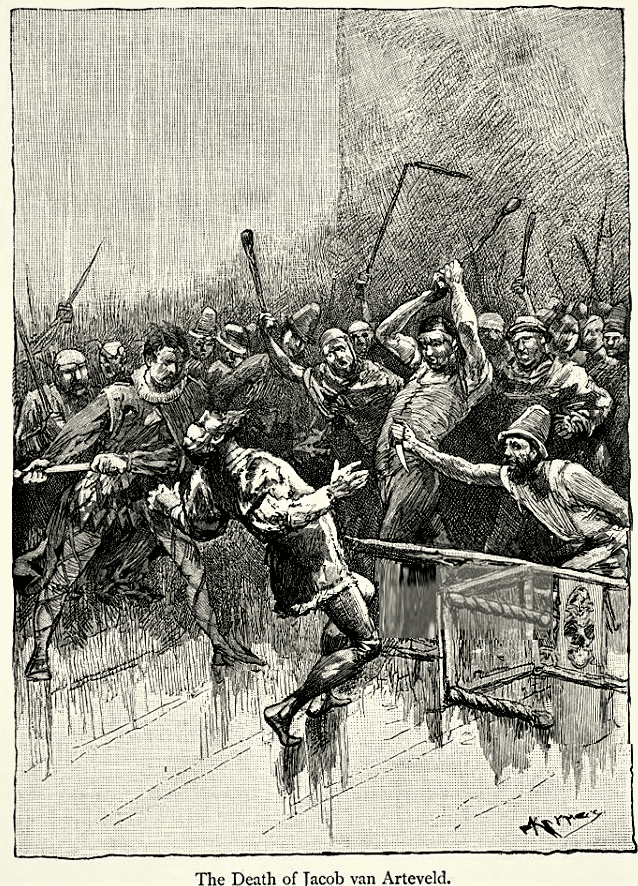
So died a man who epitomised the great changes that had been taking place in Flanders and the Low Countries over the previous few centuries. A nobody from Ghent, but for the fortune, he had amassed in the boom of the wool trade, he had risen the ranks of the contorted systems of Flemish power, by means of his political savvy, violence and fear. He had hung out and treated with a king as an equal, and had even helped have him crowned. Van Artevelde’s rule showed a pathway by which rebellion could lead to governance. However his death also showed that government by a single commoner was just as vulnerable to rebellious intent as government by any count, duke or king could be. A statue of Van Artevelde stands today in the Friday Market square in Ghent, erected in the late 19th century, by Flemish nationalists who had been looking through their history books trying to find national heroes. This in and of itself, tells us a lot about how valued the spirit of rebellion and autonomy would remain, from this point on, in the history of the Low Countries.
Sources
- The van Arteveldes of Ghent: the Varieties of Vendetta and the Hero in History, David M Nicholas
- A Plague of Insurrection: Popular Politics and Peasant Revolt in Flanders, 1323-1328, William H. TeBrake
- Activities of a Mediaeval Merchant Family: The van Arteveldes of Ghent, Henry S Lucas
- The History of England from the Accession of Henry III to the Death of Edward III, T. F. Tout
- The Chronicles of Froissart – Translated by John Bourchier, Lord Berners, edited and reduced into one volume, G. C. Macaulay
- Low Countries and Burgundy 1250-1400, Sanderson Beck
- History of the Low Countries, J. C. H. Blom and E. Lamberts
- Medieval Flanders, David M Nicholas
- The Oxford Encyclopedia of Medieval Warfare and Military Technology, Volume 1, Clifford J Rogers
- The Metamorphosis of a Medieval City: Ghent in the Age of the Arteveldes, David M Nicholas
- Encyclopedia of the Hundred Years War, John A. Wagner
- The Sources and Literature on Jacob van Artevelde, Henry S Lucas
- Holland, Thomas Holley Grattan
- Belgium, Emile Cammaerts












